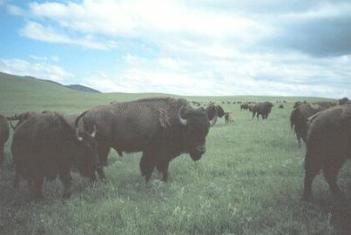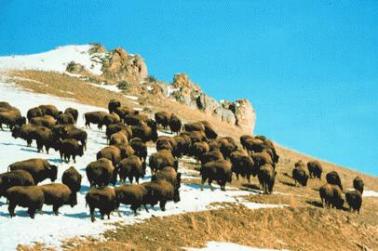|
|
|

 Unfortunately, many people at the time also wanted to eradicate buffalo as a way to take away the livelihood and well-being of Native Americans. Native American tribes depended on the buffalo's meat and hides, and many still today believe the animal has special spiritual healing powers, making it an important part of their culture.
Unfortunately, many people at the time also wanted to eradicate buffalo as a way to take away the livelihood and well-being of Native Americans. Native American tribes depended on the buffalo's meat and hides, and many still today believe the animal has special spiritual healing powers, making it an important part of their culture.




 |

|
 |
 |

|